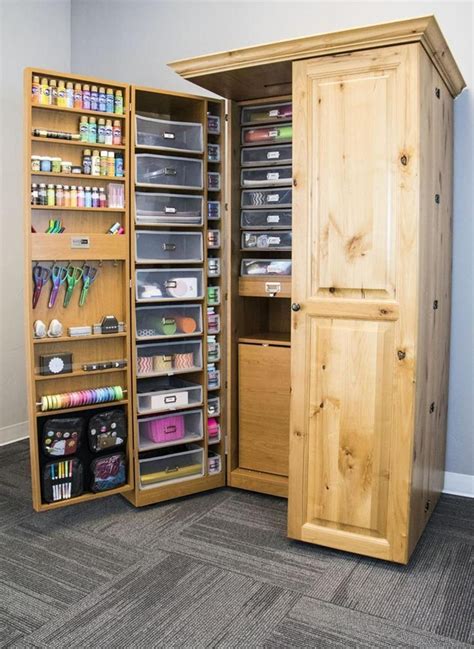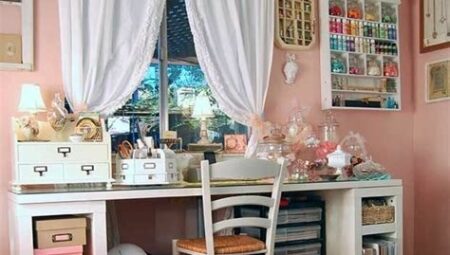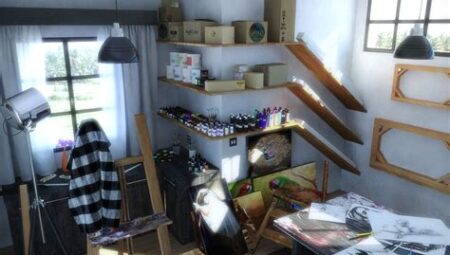Are you ready to transform that neglected corner of your home into your own dream hobby space? Whether you’re into crafting, woodworking, or painting, having a dedicated area for your hobbies can make a world of difference in your productivity and enjoyment. In this DIY edition blog post, we’ll guide you through the process of creating the perfect hobby space from start to finish. From finding the ideal location in your home to setting up functional furniture, organizing your supplies and tools, creating inspiring wall decorations, and designing a cozy and productive atmosphere, we’ve got you covered with practical tips and ideas. Get ready to roll up your sleeves and unleash your creativity as you craft the hobby space of your dreams!
Finding the Perfect Location
Finding the perfect location for your workspace is crucial for creating a productive and inspiring environment. Whether it’s a corner in your living room, a spare bedroom, or a dedicated home office, the location of your workspace can greatly impact your overall workflow and creativity.
When searching for the perfect location, consider factors such as natural light, noise levels, and proximity to other living spaces. Natural light can boost your mood and increase productivity, so try to position your workspace near a window if possible. Additionally, consider the noise levels in the area. You’ll want to choose a location that is relatively quiet and free from distractions to help you focus on your work.
Another important consideration when finding the perfect location for your workspace is proximity to other living spaces. While it’s important to have a dedicated area for work, you’ll also want to be close to other areas of your home for convenience. Being near the kitchen, bathroom, and other common areas can make it easier to take breaks and stay connected with the rest of your household.
Ultimately, finding the perfect location for your workspace is a personal decision that will depend on your unique needs and preferences. Take the time to explore different areas of your home and consider how each location could impact your workflow and overall comfort.
Setting Up Functional Furniture
When it comes to setting up a functional and efficient workspace, the furniture you choose plays a crucial role in creating a productive environment. Whether you work from home or in a traditional office setting, the right furniture can make all the difference in how well you can focus and get your work done.
First and foremost, invest in a comfortable and ergonomically designed desk and chair to help prevent physical strain and discomfort during long hours of work. A well-designed desk with ample surface space and storage options can help keep your work area organized and efficient, while a supportive chair can minimize the risk of back and neck pain.
Additionally, consider incorporating storage solutions such as shelves, filing cabinets, and drawer units to keep your workspace clutter-free and organized. Functional furniture pieces that offer both storage and surface space, such as multitasking desk with built-in shelves or a filing cabinet with a top surface for additional workspace, can help maximize the efficiency of your workspace.
Lastly, consider the layout and arrangement of your furniture to ensure that it promotes a seamless workflow. Position your desk and other essential furniture pieces in a way that allows for easy movement and access to supplies and tools, creating a workspace that is both functional and conducive to productivity.
Organizing Your Supplies and Tools
Organizing your supplies and tools is essential for creating an efficient and productive workspace. Whether you are working from home or in a shared office, having a well-organized collection of supplies and tools can help streamline your work process and minimize distractions.
Start by categorizing your supplies and tools into different groups. For example, you can have a separate area for writing utensils, another for electronic devices, and a designated space for documents and files. This will make it easier for you to locate what you need when you need it, saving you time and reducing frustration.
Invest in storage solutions such as shelves, drawers, and bins to keep your supplies and tools neatly organized. Labeling these storage containers can further enhance organization and make it easier for you to find what you need at a glance. Consider using clear containers or transparent bins so that you can easily see the contents without having to open each one.
Regularly declutter and reorganize your supplies and tools to prevent accumulation of unnecessary items. Discard or donate items that you no longer need or use, and create a system for regularly maintaining the organization of your workspace. By staying on top of clutter, you can ensure that your workspace remains functional and efficient.
Creating Inspiring Wall Decorations
When it comes to creating a space that is both visually appealing and inspiring, wall decorations play a crucial role. Whether you’re looking to spruce up your living room, bedroom, or home office, a well-decorated wall can make all the difference in transforming a space into a place of creativity and productivity.
One of the first steps in creating inspiring wall decorations is to decide on a theme or color scheme. This can help in guiding your choices when it comes to selecting the right pieces to hang on your walls. Whether you opt for a bold, colorful gallery wall or a minimalistic display of black and white prints, having a clear vision of the look you want to achieve is essential.
Another essential aspect of creating inspiring wall decorations is the choice of art and decor pieces. Consider mixing and matching different types of wall art, such as paintings, photographs, and prints, to create a diverse and dynamic display. Additionally, incorporating elements such as wall decals, tapestries, or even a statement mirror can add an intriguing and unique touch to your walls.
Finally, don’t be afraid to get creative and think outside the box when it comes to arranging your wall decorations. Experiment with different layouts, such as creating a focal point with a large piece of art or arranging smaller pieces in a symmetrical or asymmetrical pattern. The key is to have fun and let your personality shine through in your wall decorations.
Designing a Cozy and Productive Atmosphere
When it comes to creating a comfortable and efficient workspace, designing a cozy and productive atmosphere is crucial. It’s important to consider factors such as lighting, color scheme, and layout to ensure that the space is both inviting and conducive to productivity. By focusing on these elements, you can create a workspace that is not only aesthetically pleasing, but also helps you stay focused and motivated.
One of the key aspects of designing a cozy and productive atmosphere is choosing the right lighting. Natural light is ideal for a workspace, as it can help improve mood and energy levels. In addition to natural light, incorporating task lighting such as desk lamps can help create a well-lit and inviting environment.
Another important factor to consider is the color scheme of the workspace. Warm, neutral tones such as beige, light grey, or soft blues can help create a calming and soothing atmosphere, while also promoting focus and productivity. Avoiding overly bright or harsh colors is important, as they can be distracting and tiring for the eyes.
In addition to lighting and color, the layout of the workspace also plays a crucial role in creating a cozy and productive atmosphere. Arranging furniture in a way that promotes comfort and movement can help make the space feel more inviting and functional. Incorporating ergonomic furniture such as a comfortable chair and a spacious desk can also contribute to a cozy and productive environment.
Frequently Asked Questions
How do I find the perfect location for my hobby space?
Consider a space with ample natural light and minimal distractions, such as a spare room, basement, or corner of a larger room.
What are some functional furniture ideas for a hobby space?
Some practical furniture options include a sturdy table or desk, storage shelves or cabinets, and comfortable seating for longer crafting sessions.
How can I effectively organize my supplies and tools in my hobby space?
Utilize storage containers, labeling systems, and wall-mounted organizers to keep everything easily accessible and clutter-free.
What are some creative ideas for decorating the walls of my hobby space?
Try using pegboards for hanging tools, framing inspirational quotes or artwork, or creating a gallery wall of finished projects.
How can I design a cozy and productive atmosphere in my hobby space?
Incorporate soft lighting, comfortable seating, and personal touches like rugs or curtains to make the space inviting and conducive to creativity.
What are the benefits of creating a DIY hobby space?
Having a dedicated space for your hobbies can increase productivity, reduce clutter in other areas of your home, and provide a sense of accomplishment and pride in your creations.
How can I stay motivated to utilize my hobby space regularly?
Set specific goals for your projects, schedule regular crafting sessions, and surround yourself with visual reminders of past successes to stay inspired and motivated.



